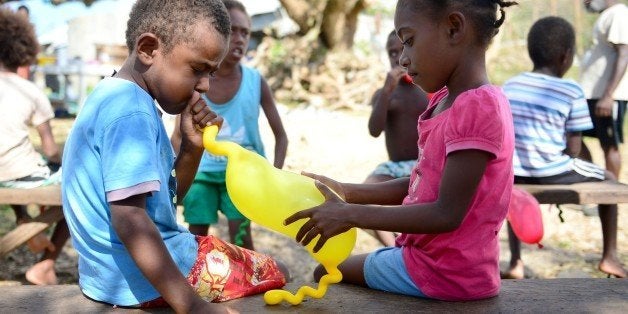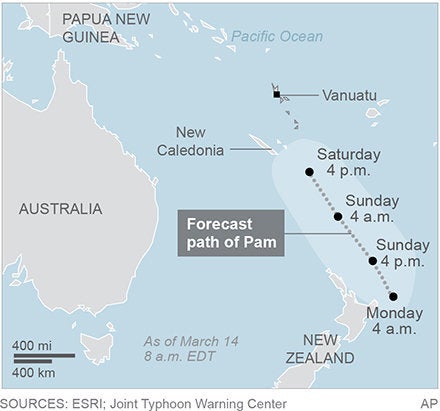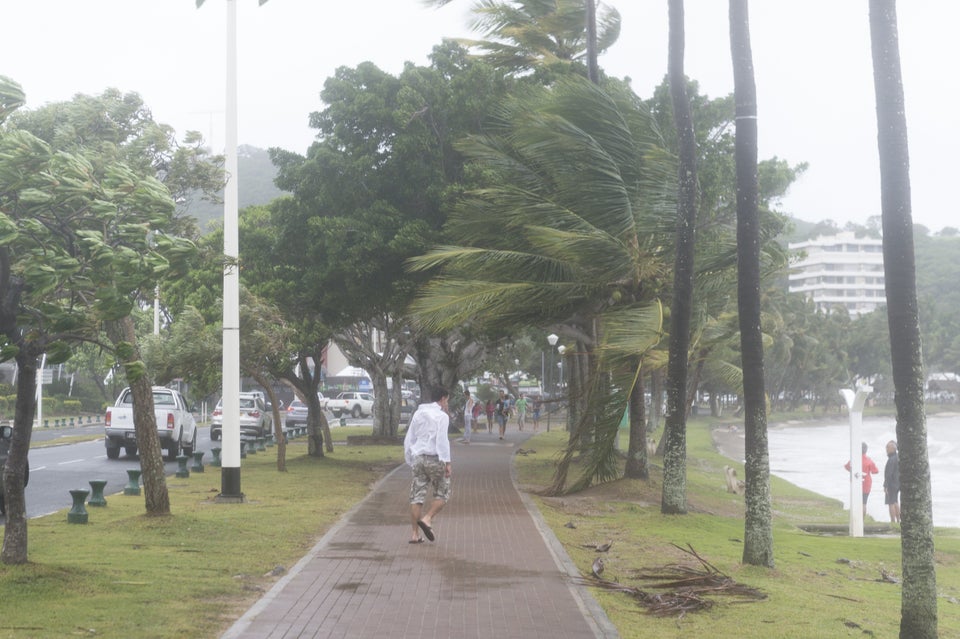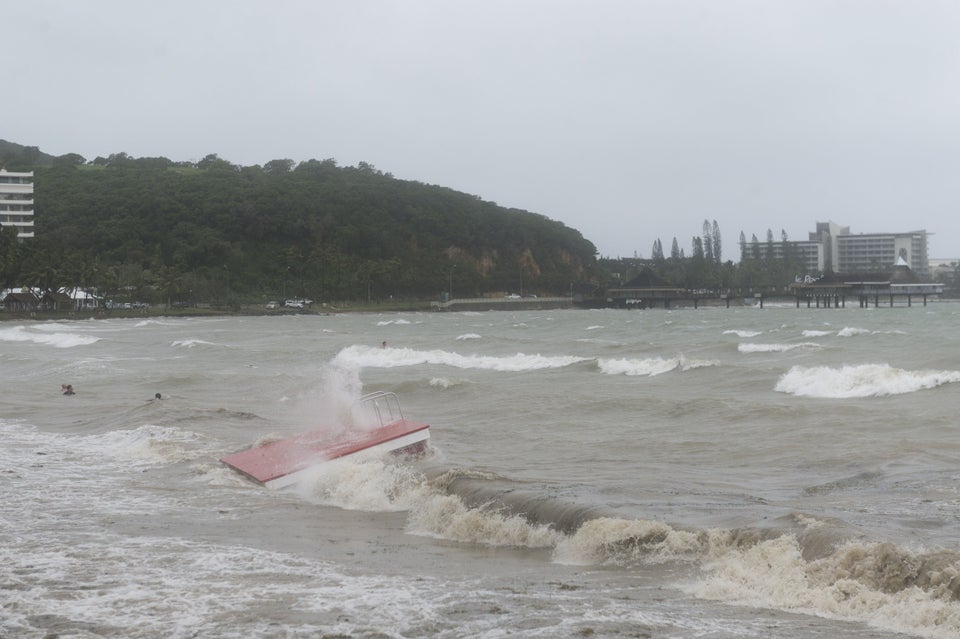
EFATE, Vanuatu (AP) — The roof from what was once the home of principal Melizabeth Uhi and her staff is now folded over branches high in the trees that border her school. She's now living with two other staff members in the only classroom that's still habitable. And she's running low on the rice she had before Cyclone Pam tore through Vanuatu a week ago, upending her life.
But Uhi is moving forward. She's helped organize a community cleanup of the Manua Centre School grounds on the main island of Efate on Monday, and is determined that her 314 students will return to school as soon as possible.
A week after the cyclone tore through the South Pacific archipelago with winds of 270 kilometers (168 miles) per hour, people are focused on the task of rebuilding.
The signs of progress are everywhere. The road that rings the main island is now accessible to all vehicles following temporary repairs to bridges, and the cell network that's vital to keeping people connected is gradually being restored on Efate and some other islands. On the sides of roads, crews have been repairing electricity lines and residents cutting tree trunks into fire-sized slices.
The task remains enormous. Many of the outlying islands still don't have any way to communicate with the outside world, while tourism, vital to the economy, has taken a huge hit, with many operators fielding call after call to cancel bookings. Throughout Vanuatu, many people remain worried about the most basic necessities: water, shelter and food.
About 65,000 people across Vanuatu were left homeless by the cyclone, which killed 17 people, said Osnat Lubrani, the U.N. humanitarian coordinator for the country.
Vanuatu and other small island nations face unique challenges in recovery due to their remote location and scattered populations, Lubrani said. Delivering services even when there isn't a crisis is hard and expensive, she said.
"So certainly in a time of disaster, that makes things very difficult," she said. "On the positive side, I think people are extremely resilient."
Lubrani said the total price tag for the rebuild is still unknown.
Neighbors New Zealand and Australia quickly committed millions of dollars toward the relief effort. There's also been millions more committed by other countries, including France, the U.S., the United Arab Emirates and South Korea. Relief agencies are also moving enormous resources into the region.
But for people like Uhi, the school principal, the response can't come quick enough. She's been given some tents by World Vision, but needs much more help, she said. Mothers have been coming by every day to ask when their children can return.
"There's a little bit of heartbreak," she said. "I really want the children to be able to go back to school."
The government has canceled all classes across the nation until March 30, although there's no guarantee the Manua school will be ready to open then.
For many people, small improvements are noticeable each day, whether in their living situation or their health.
At the main hospital in Port Vila, the capital, George Palap has been watching the progress of his 1-year-old nephew, Moses Sam. The family was on Tanna island when the cyclone struck in the early morning of March 14 and tore apart their homes. They ran for some nearby caves. Palap's sister Sampat, who was holding her infant, stumbled in the ferocious winds, he said, and the boy's head smacked into the ground.
The family made it to the caves, but Moses's wound was serious. Palap said his head swelled to twice its normal size and became infected. The Red Cross arrived by helicopter and took the boy to Tanna's airport, where he was flown to Port Vila, his uncle said.
The swelling has now gone down and Moses is doing much better, Palap said. There doesn't appear to be any permanent damage and the family hopes he can leave the hospital next week, he said.
For others, the cyclone has delivered an opportunity to make changes.
Lisau Manses was hanging laundry inside her house Saturday. The interior looked relatively normal — books on the shelves and crockery stacked in a cabinet. Missing entirely, however, was the roof, allowing the sun to shine in and dry her clothes.
Manses said she and her husband didn't think they would try to rebuild their coastal home, with its particular exposure to extreme weather. Instead, they are considering building a new home farther inland.
"We want to be out of the wind," she said.
Related
Before You Go






